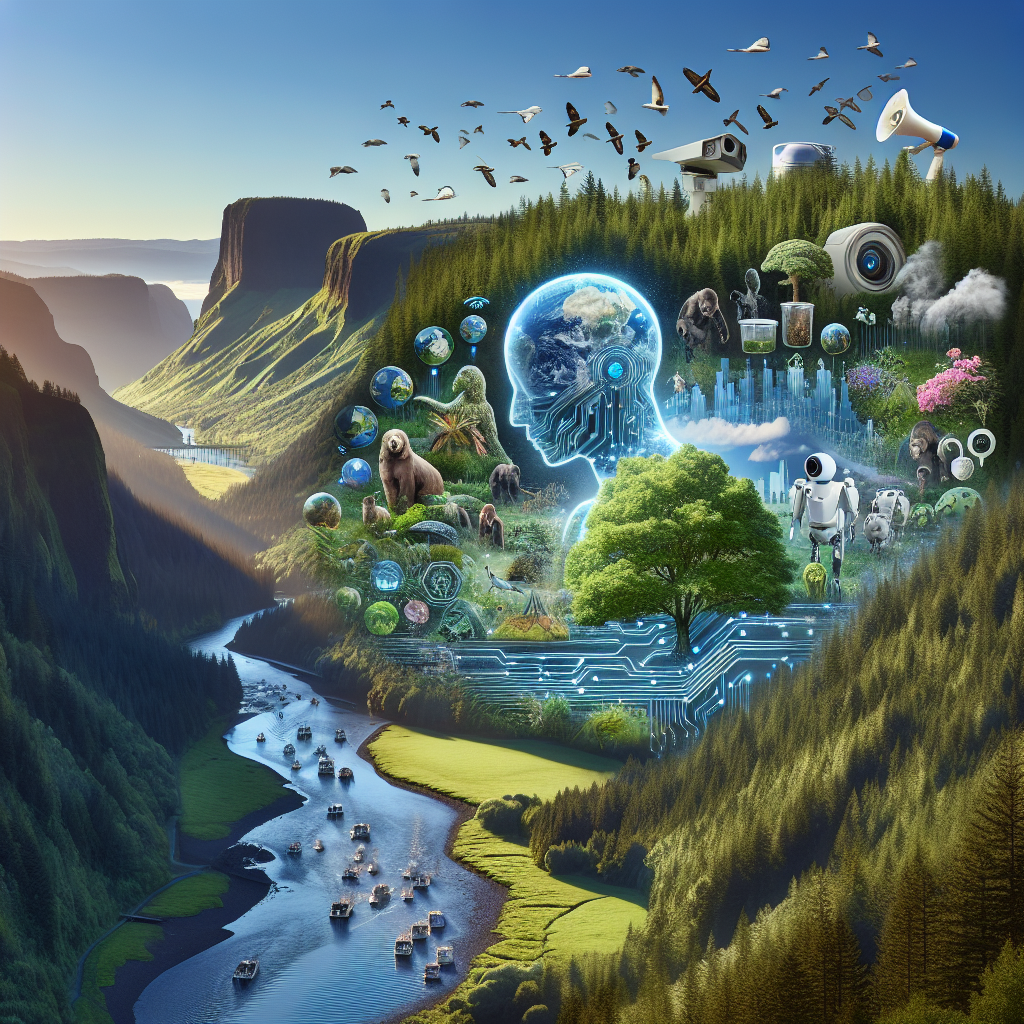Forests, Rivers, and Code: The Intersection of AI and Conservation in Oregon
Oregon is more than just a state with peculiar weather and a complicated relationship with umbrellas. It’s a kaleidoscope of lush forests hugged by misty breezes, dramatic coastlines tattooed by crashing Pacific waves, and high desert landscapes brushed with crimson sunsets. And we can’t forget about the historic Powell’s City of Books nestled in the heart of downtown Portland sporting far more plot twists than anyone could ever finish. Its unique heritage dances in harmony with a vibrant tech culture – a dance that may hold the key to the future of conservation. Thanks to the innovative integration of artificial intelligence and environmental monitoring, Oregon stands at the forefront of pioneering stride in preserving its natural beauty for generations to come.
From “Silicon Forest” to Green Forests
Welcome to the “Silicon Forest,” a gentle nod to Oregon’s flourishing tech scene, led by companies like Tektronix and Intel. Names that don’t just resonate nationally, but are known around the globe. Yet Oregon’s tech industry isn’t satisfied with just putting itself on the map. It’s harnessing the power of artificial intelligence (AI) and machine learning (ML) to conserve the state’s cherished landscapes. Even Pilot Butte, the ancient cinder cone overlooking Bend, would tip its volcanic cap at computing’s role in protecting our natural environment.
How AI Solves Conservation Challenges

The Bridge of the Gods isn’t the only bridge in Oregon. The remarkable cooperation between Oregon’s tech industry and environmentalists constructs a promising bridge between the world of data and the boundless realm of nature. AI is employed to analyze data from drones, satellites, and remote environmental monitoring stations. Instead of trudging through the damp underbrush of the Tillamook State Forest or teetering on the steep slopes of Mount Hood, researchers can now monitor land health, track endangered species, and anticipate natural disasters.
Bold technological initiatives, like the Oregon Environmental Data Initiative, take the lead in harvesting detailed data from remote sensors across the state’s complex ecosystems. With more than just threading rain and s’mores around drizzle-kissed campfires at stake, it’s a game changer for timely information processing. No longer are researchers held ransom by invasive species while frantically flicking through field guides.
A New Kind of Trailblazing
Emphasizing the importance of environmental stewardship, Oregon’s tech companies are now trailblazing in a different sense. The state’s rich network of trails, like the McKenzie River Trail or the Pacific Crest Trail, has always been etched in the hearts of adventure-loving locals. Now, metaphorical trails are being blazed through dense forests of data to prompt conservation strategies.
Case in point, the artificial intelligence company, AltaML, recently joined hands with the Oregon Watershed Enhancement Board for a project underwritten by the Google.org Impact Challenge on Climate. Their mission? Predicting landscape recovery after wildfire events to aid in planting decisions. In a state where the scent of pine needles is no stranger and the crackle of a forest campfire is an evening lullaby, these are no longer just tech projects. They are lifelines woven into the fabric of Oregon’s future.
Conscientious Innovation
The Intersection of AI and conservation in Oregon is not merely another chapter in the ever-evolving tech book – it’s a testament to Oregon’s environmental conviction. Call it the product of the infamous “Keep Oregon Green” signs dotting the 101 Highway or the ingrained spirit reverberating through recycling fervor at local Full Sail Brewery.
Working in tandem with the swell of AI blobs from Witch Hazel to Rhododendron meditates on a fundamental Oregonian sentiment. We’re not just caretakers of the space between Washington and California. We’re guardians of Crater Lake’s hypnotic blue, protectors of the snowy winters the Cascades have whispered about, and ambassadors of the carpet of wildflowers that blesses Mount Bachelor every summer.
Conclusion: Oregon’s Technological Harmony
With a latté from Sisters Coffee Company in one hand and an AI algorithm tackling environmental challenges in the other, Oregon maintains an innovative harmony that’s truly unique. No matter how many fish fly through the air at Pike’s Place, this approach to technological melding and environmental preservation is something only the Beaver State can boast.
So, as the warm orange hues of an Oregon sunset dip behind the obsidian depths of Crater Lake, remember that the future of conservation might be found not just in the rustle of old Douglas firs or the whispers of the Columbia River. It might be nestled within bytes and data in a silicon forest, inspiring us all to wonder what innovative marvels the future of AI will unfold for Oregon’s majestic outdoors. Or better yet, challenge us to explore how technology can play an integral role in preserving the natural wonders nestled in our own homelands.
